The Cold War
Science and innovation

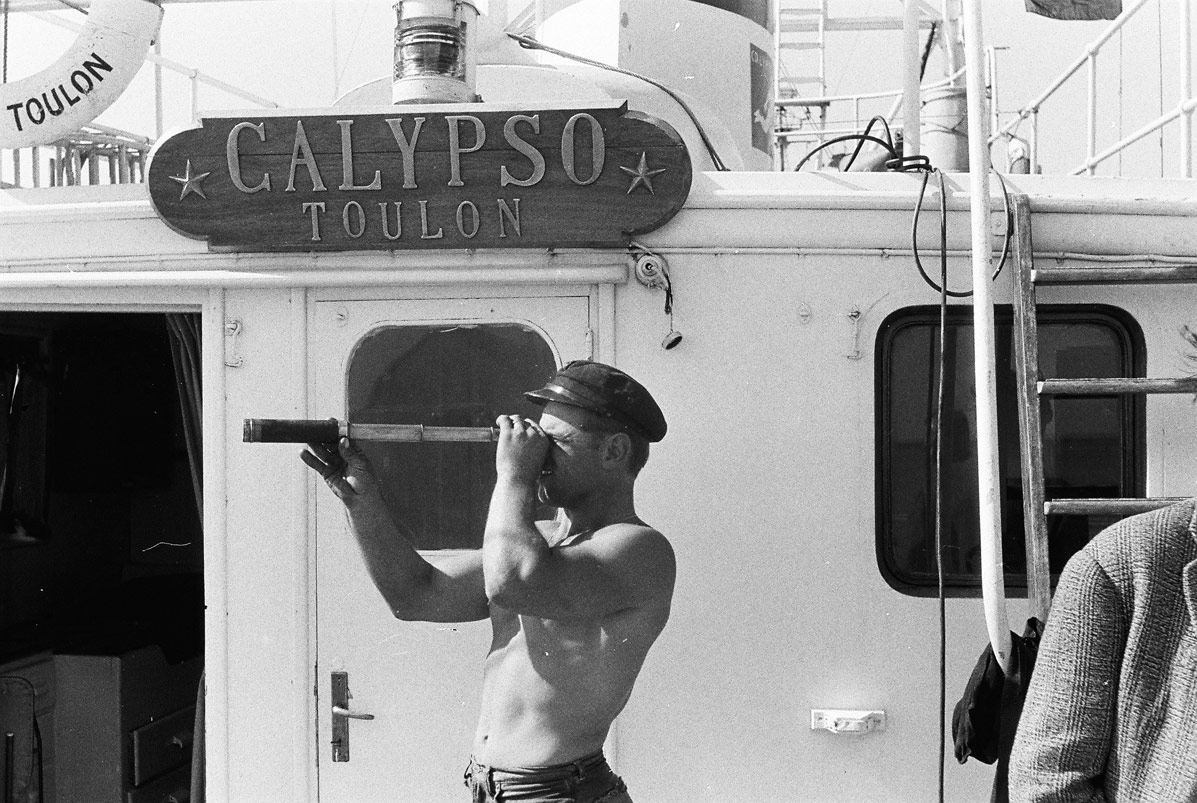
Aboard the Calypso for the Gibraltar Survey, May 1961
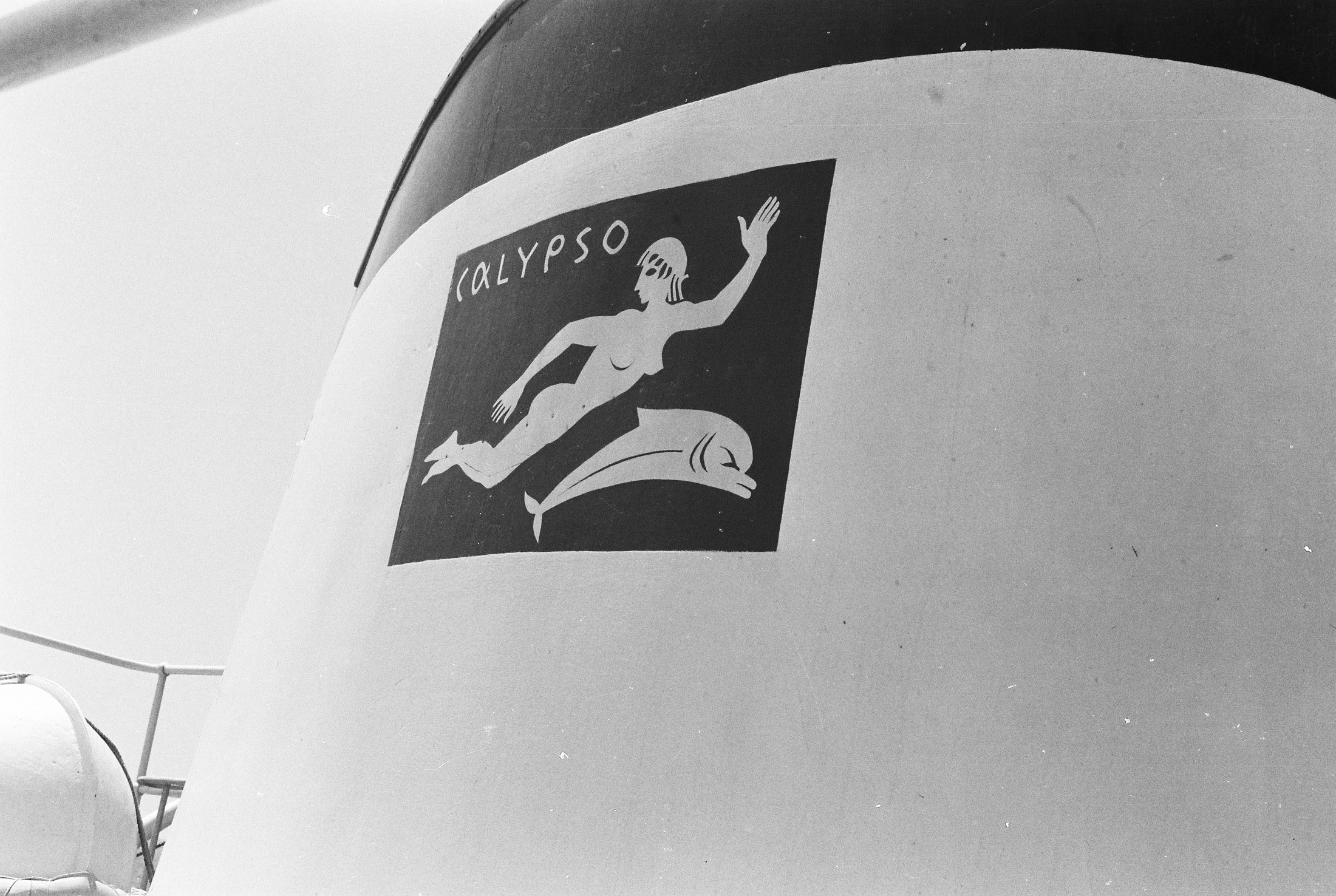
The Calypso was one of six vessels working on the Gibraltar Survey, sailing under French, Norwegian, Belgian and Italian flags. Cousteau was happy to lend his ship to NATO’s expedition, but he did not participate in it himself.
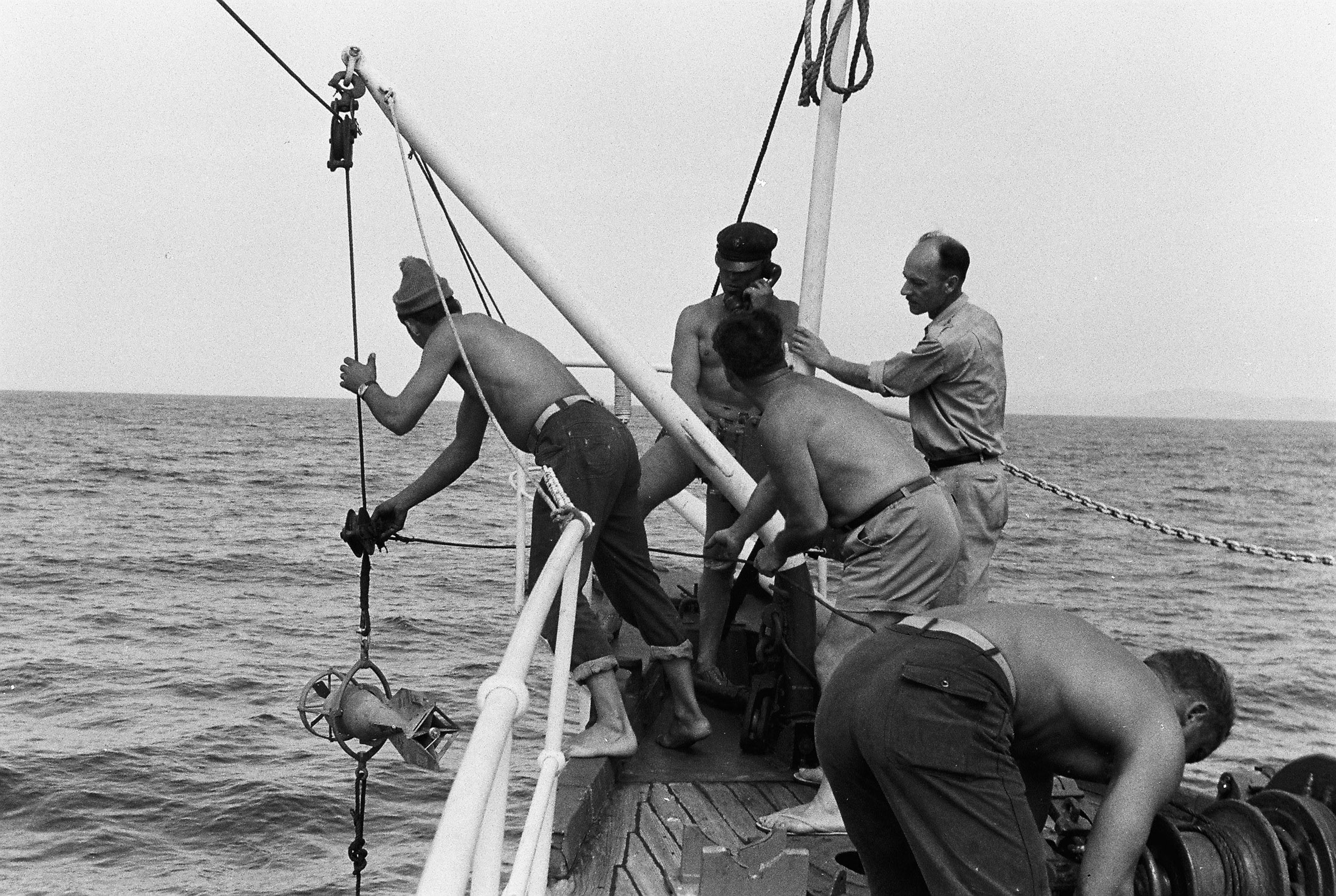
Professor Lacombe (Far right) had established in previous work that three factors were interrelated: the net flow of water in one day, the distribution of barometric pressure in the Western Mediterranean and the average level of that sea.
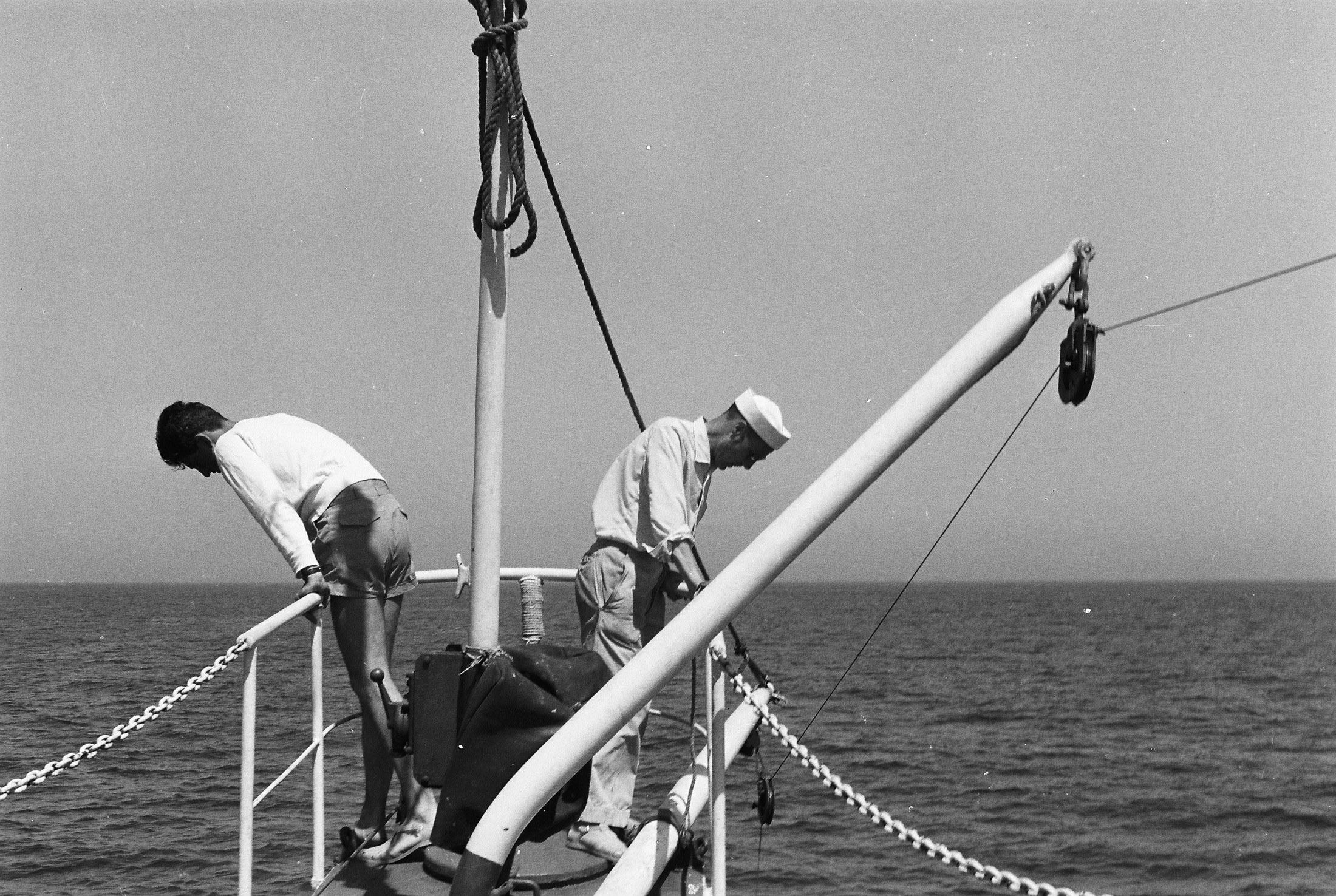
In this photo, Professor Lacombe (Right) is observing the angle of inclination of two cables, since this influences the interpretation of recordings.
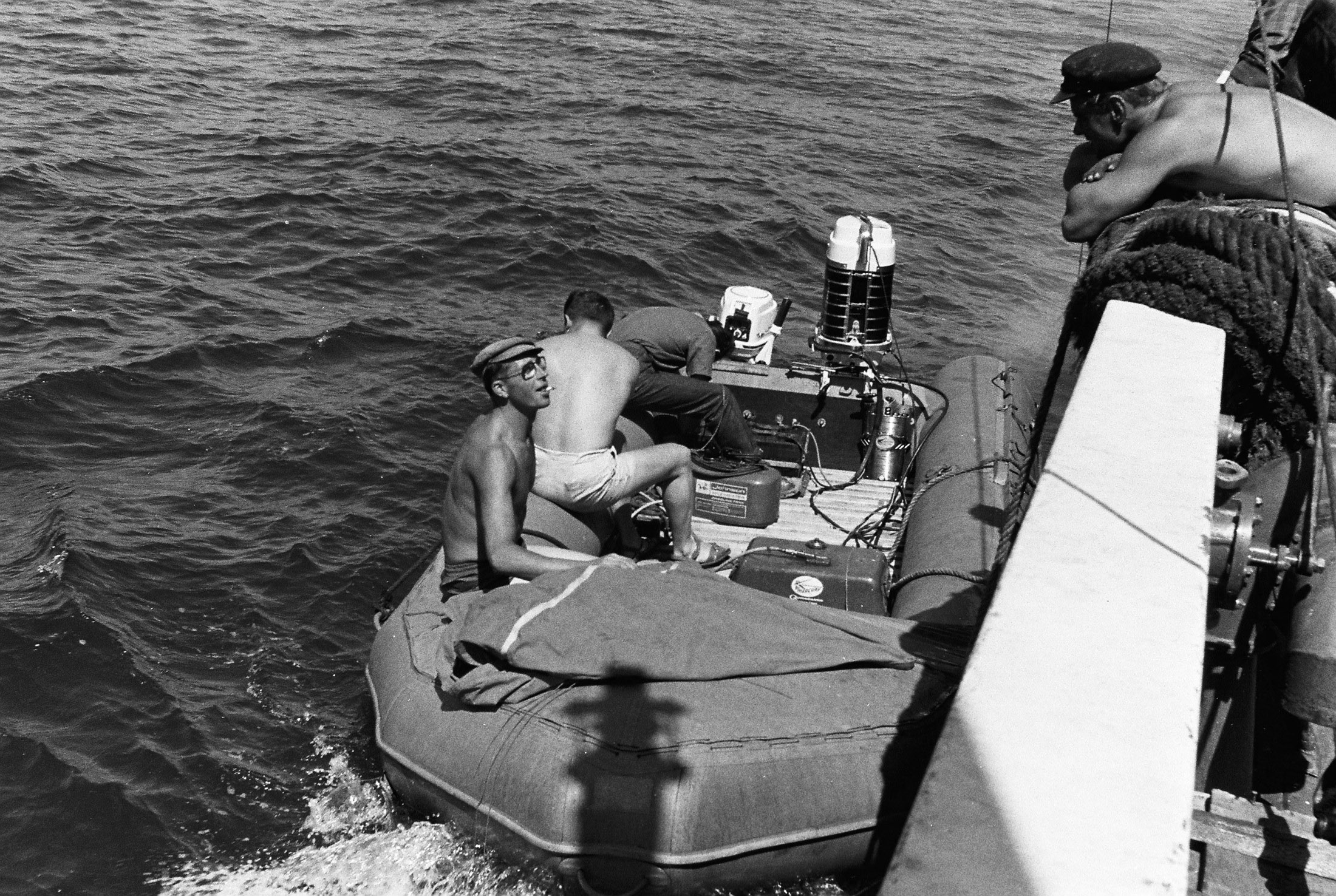
The aim of the Gibraltar Survey was specific: find factors that were easy to measure and could give daily records of the behaviour of the water in the Straits over a long period of time.
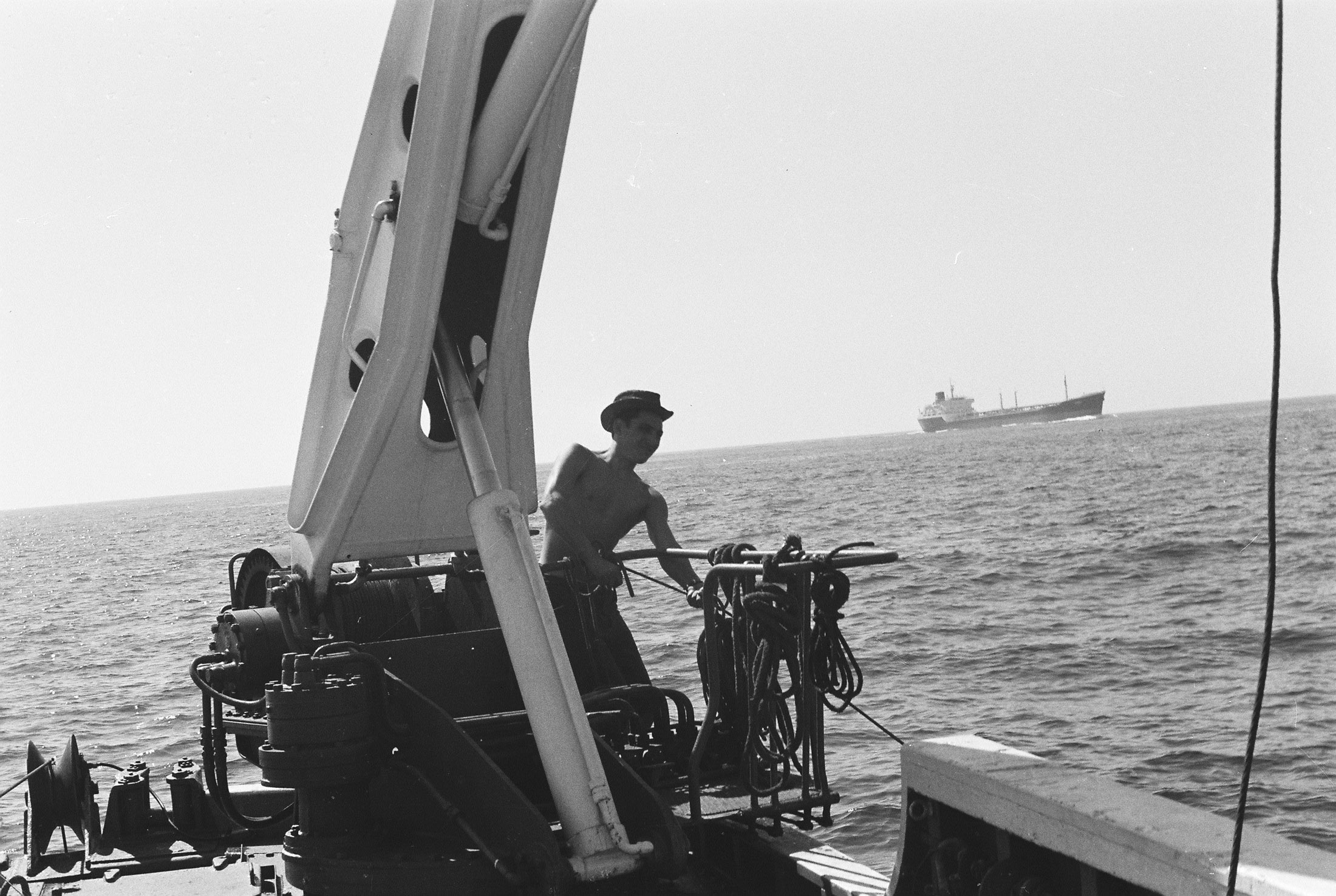
Several factors were monitored throughout the survey such as the salt content in water at varying depths and temperatures; how currents evolved at different depths; and the barometric pressure.
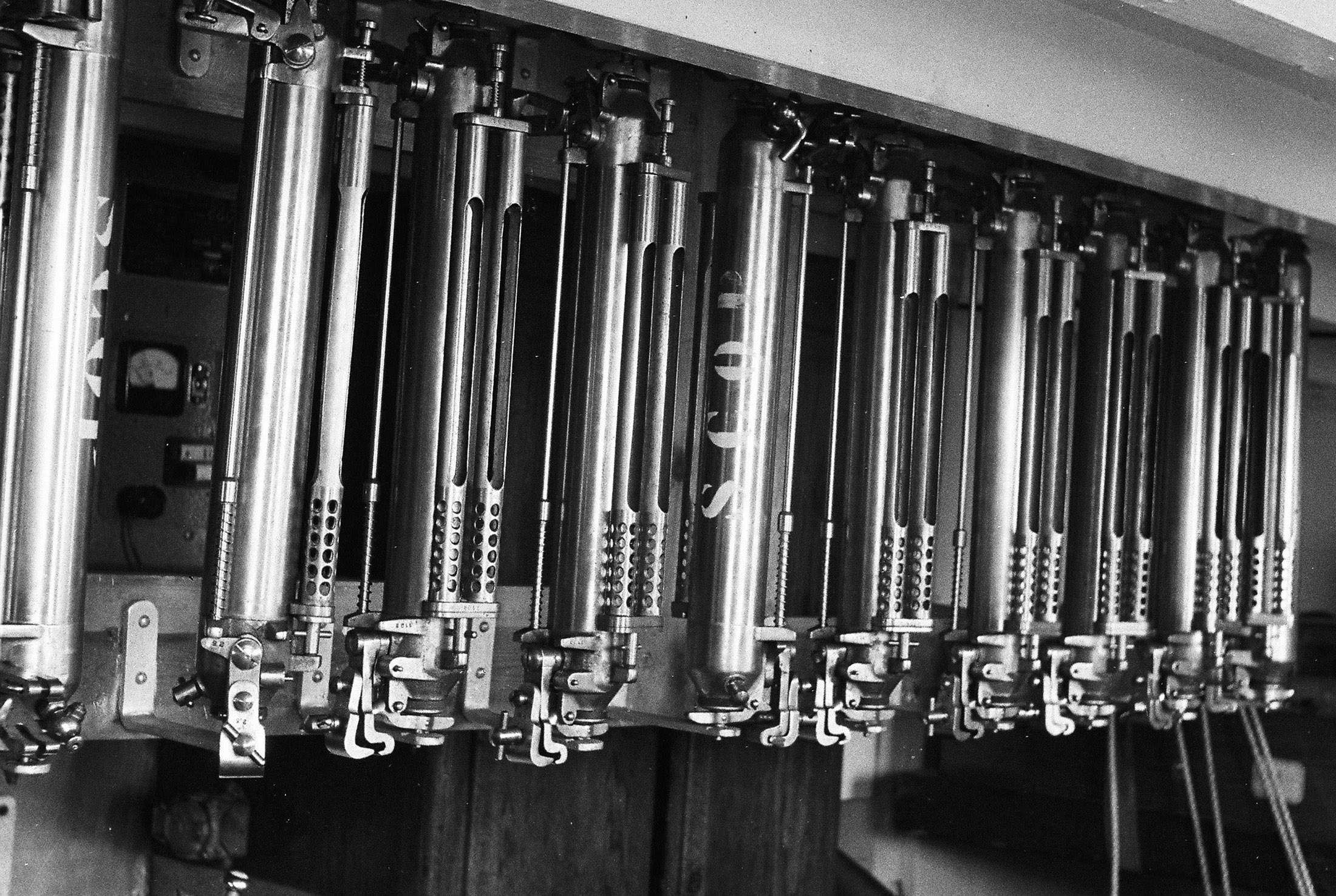
To measure salt content in water, the scientists used these Ekman reversing bottles, which were lowered into the sea at intervals of 50 m, to a depth of up to 250 m. The branch of oceanography that analyses salt content in water at varying depths and temperatures is called hydrology.
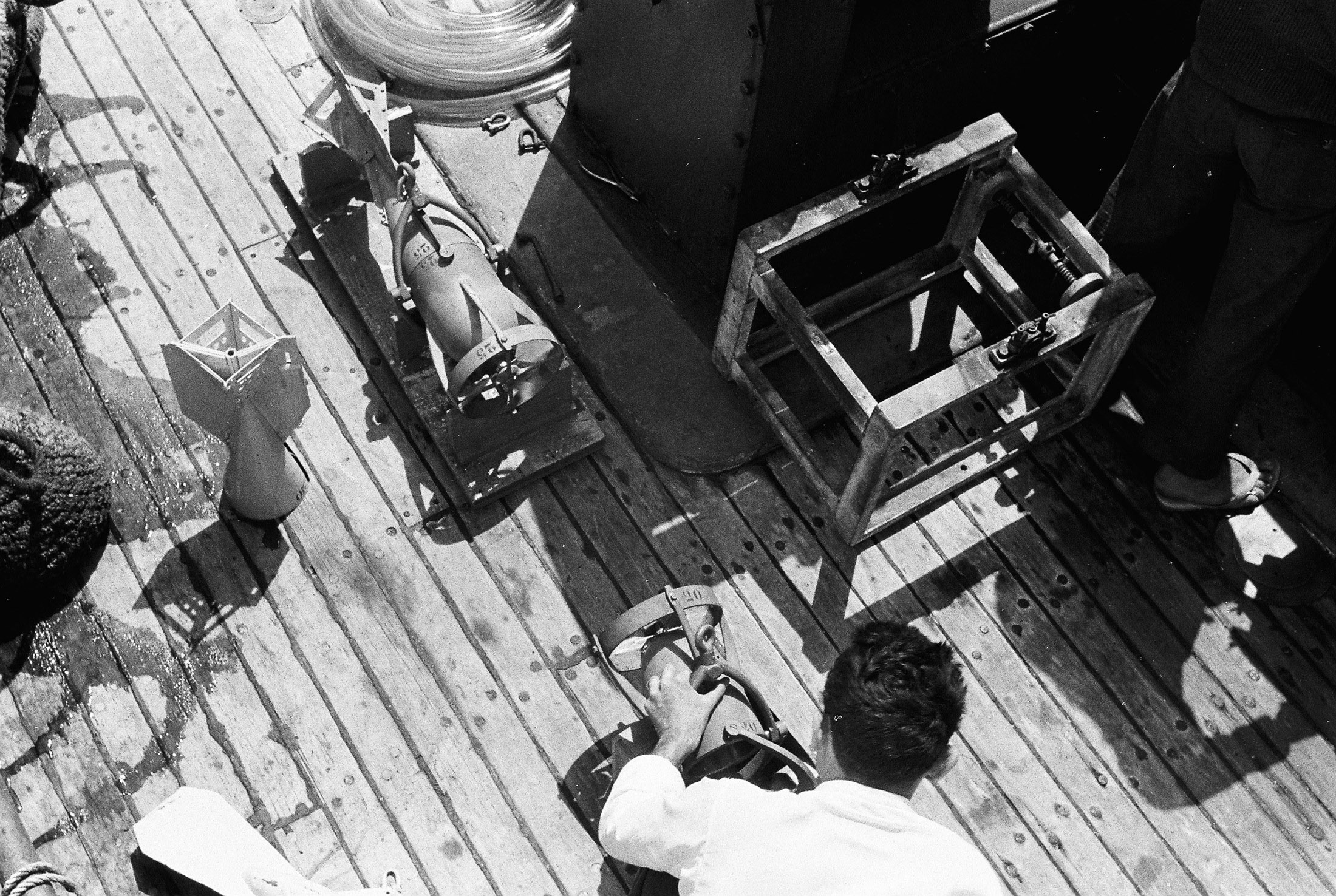
The scientific team observed the currents with a current meter, as seen here; current meters were lowered to different depths so that a picture would be built up of current movements.
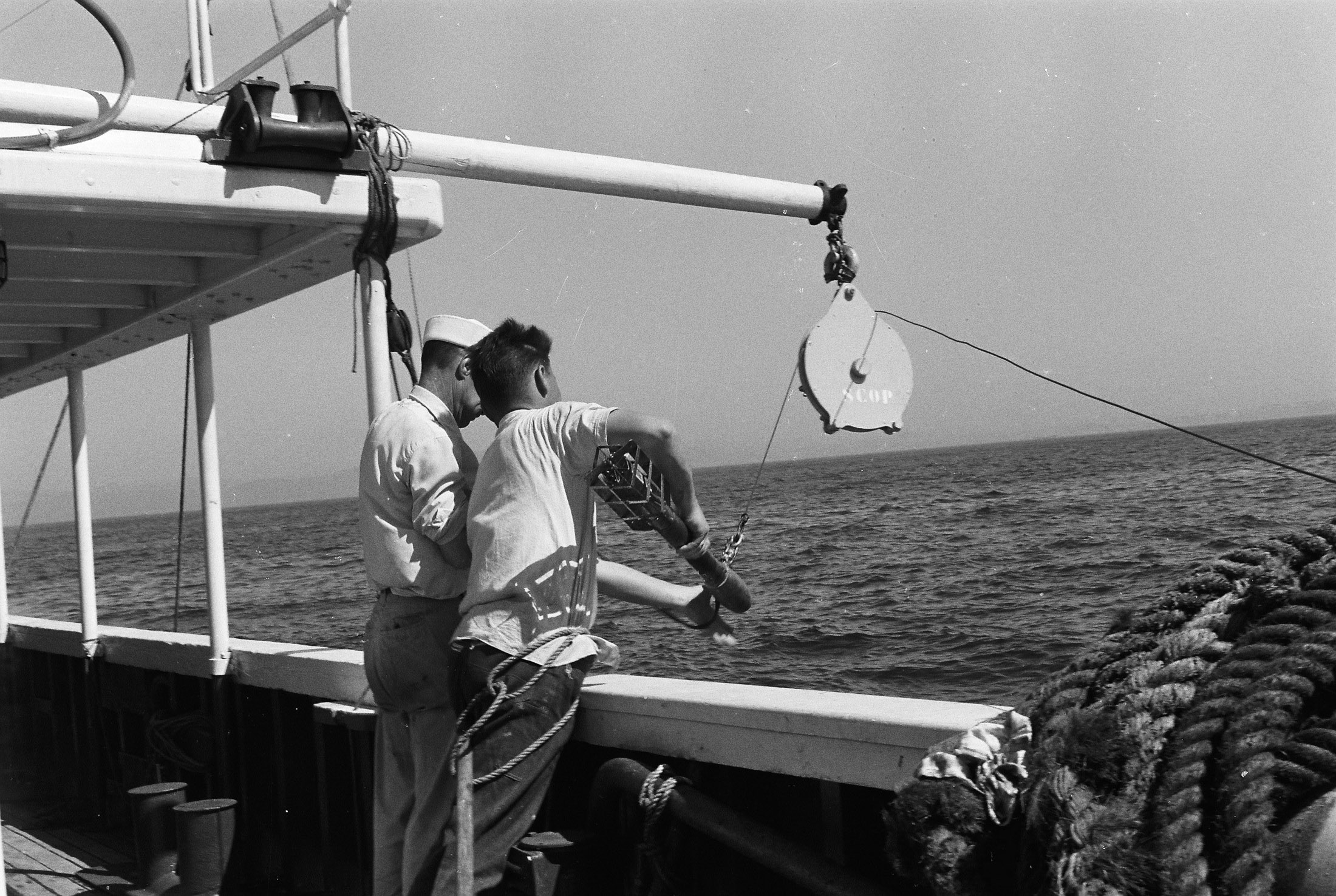
The team also used bathythermographs, such as the one in this photo; these instruments recorded temperature and water pressure simultaneously.
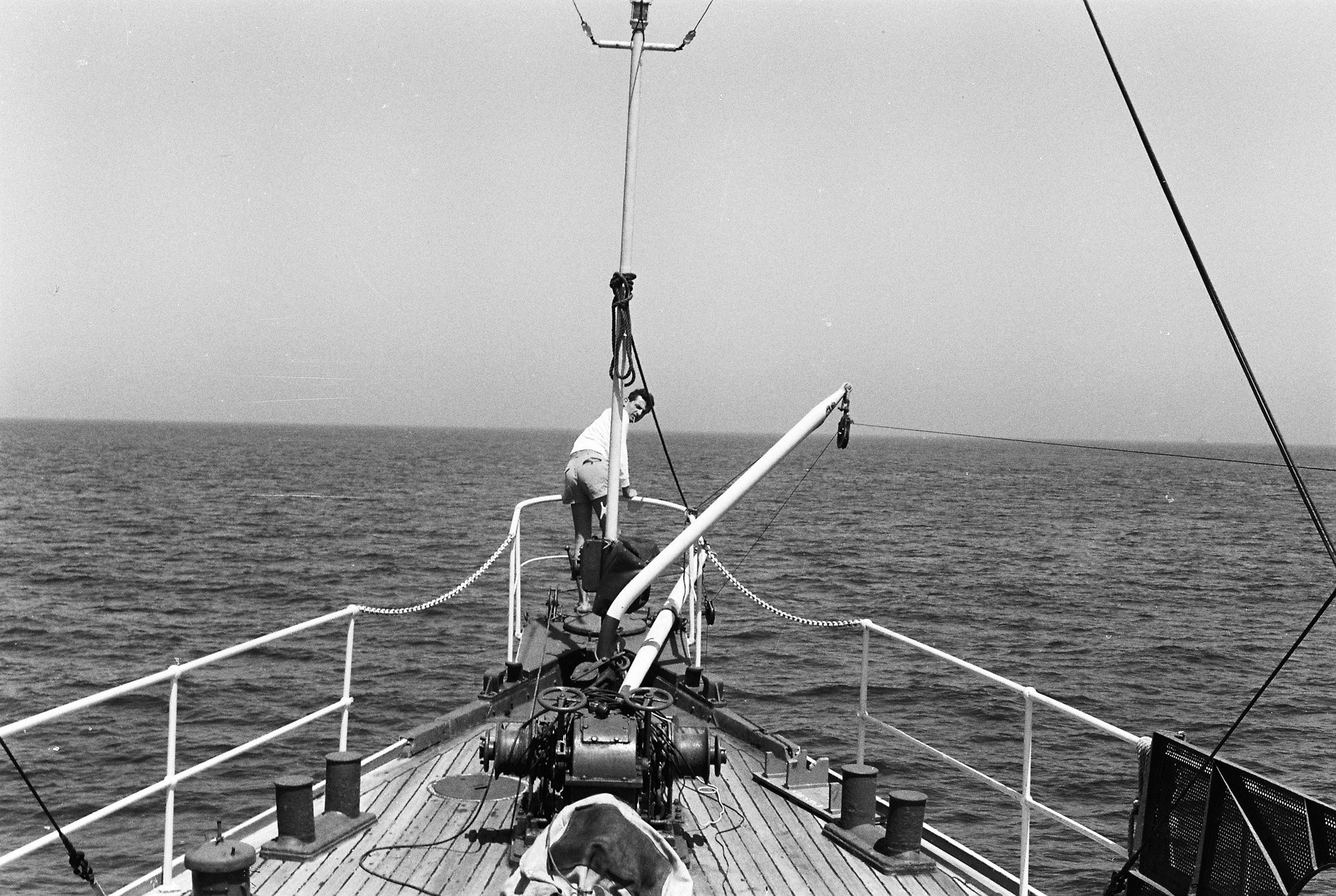
Interestingly, there is an interrelation between the atmosphere and the surface of the sea, which leads to the formation of waves. As such, the team took sophisticated meteorological measurements and found it useful to study storm centres too during the six-week survey.

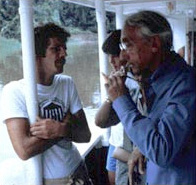 Jacques Cousteau on board the Calypso
Jacques Cousteau on board the Calypso